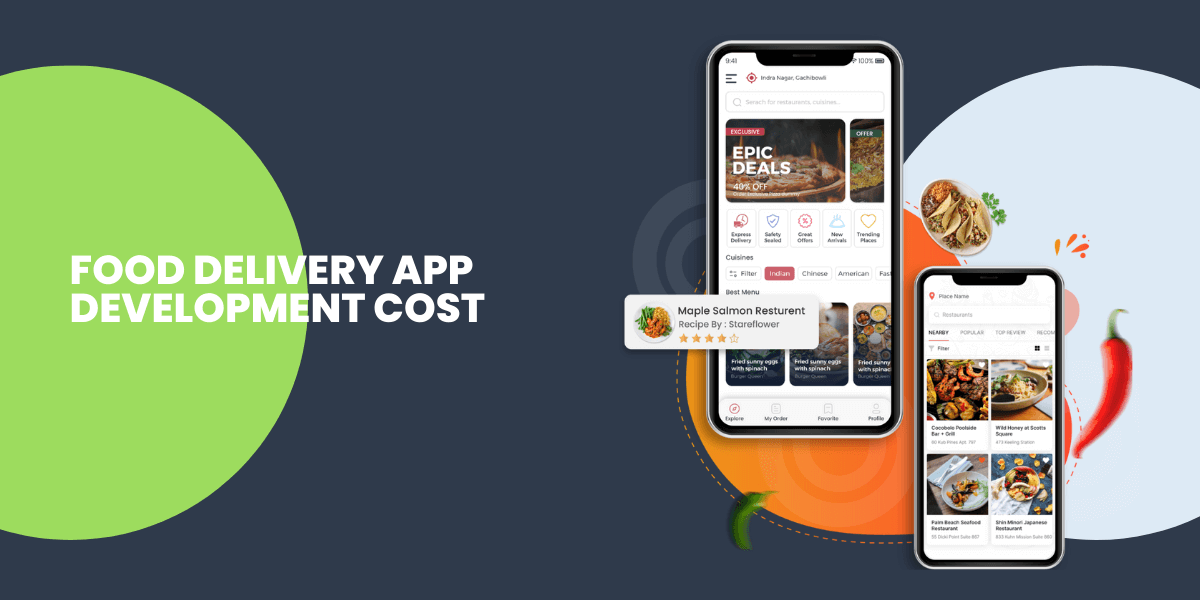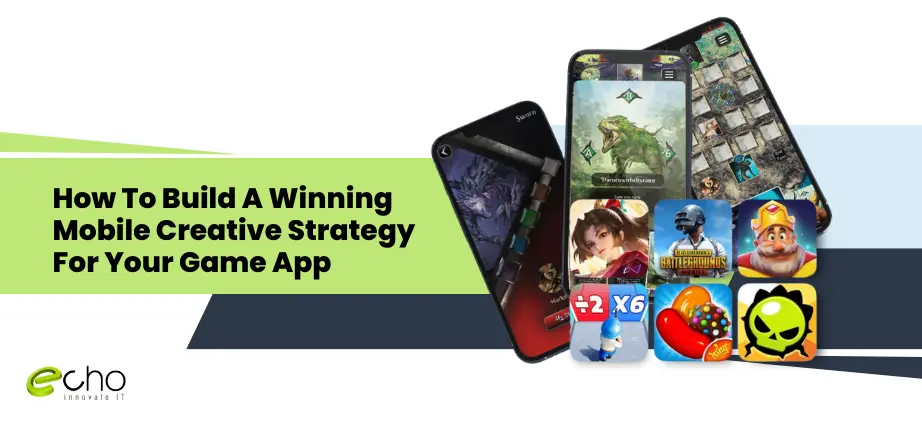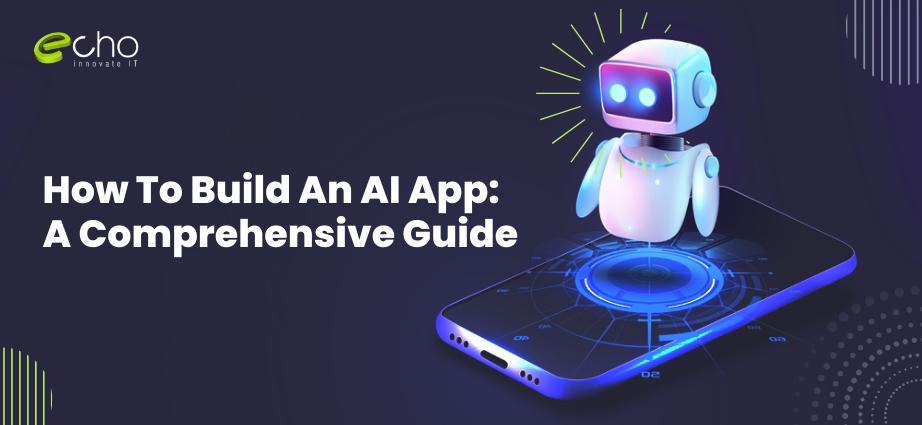Food delivery mobile app development has revolutionized the lives of people all over the globe. Once upon a time, we all went outside to wait for our supper. Online food delivery app development has won the competition to develop food delivery app due to its superior user experience. As can be seen that the whole process of ordering food, which is not limited to a single cuisine, accessible with the touch and flick of a finger, on demand food delivery software is destined to be an immediate success with a large pool of mobile app users of all demographics.
The food delivery app development cost depends on the pricing model you choose and the app’s level of sophistication. It also relies on the features you choose to add in your food app development.
Overview Of The Global Food Delivery Market: Size, Growth, And Industry Statistics

The convenience of on-demand app development on mobile phones has increased their adoption. The rising demand for mobile food delivery apps shows how quickly the gap between online and offline is decreasing. Consequently, in a few years, online demand will exceed offline demand.
Here are some data on food delivery app development to help you comprehend their importance.
These numbers show how technology has helped bridge offline and online meal ordering. In 2023, the U.S. trends in the food delivery industry might reach $24.461 billion with 124.4 million consumers. By 2024, the market is expected to be valued at USD 14,679 million, increasing at 9.5%.
To develop food delivery app business is expected to reach $300 billion by 2030 as smartphone technology improves and more applications are released. As a matter of fact, These apps produced $22,073 million, according to Statista. Undoubtedly, this income should reach $31,413 million by 2023. In 2027, the worldwide online food delivery app development is expected to reach 223.7 billion.
Classification Of Food Delivery Services

The cost of building a food delivery app and process is well-known. As on-demand delivery firms arise, three types of food delivery apps are in high demand. Evidently, using any kind may revolutionize your food delivery company paradigm.
To begin with, the food applications know the various categories. Food ordering apps come into three categories:
Delivery-service Aggregator:
Aggregators began 15 years ago. It’s the ‘third-party’ mobile food delivery app. This sort of business offers client service via a single app or website. Aggregator applications link clients with various nearby eateries to choose any cuisine. This service survives on restaurant commission. Customers are worry-free.
There are major participants in the aggregators industry. These online food delivery services have gained prominence. This includes app like UberEats, Food Panda and GrubHub.
Ride-hailing delivery service apps:
New ride-hailing mobile food delivery applications provide the same menu flexibility as aggregators. It’s logistics-focused, which is great. New delivery applications may aid small businesses that can’t afford their own delivery service. Therefore, it’s a great chance for eateries who have never delivered food.
This service is low-cost since there are no driver fees, car maintenance expenses, or insurance premiums. Without a doubt, the ride-hailing company is accountable. When you develop food delivery app, it benefits restaurants and consumers with a set fee per order. Food Delivery mobile applications like UberEATS, Zomato, and PostMates are delivery partners.
Full-stack delivery apps:
In this model, one service provider supports the complete food delivery business model like DoorDash. One party prepares and delivers meals to customers.
This company concept is distinct from the others and demands big money. Popular eateries has significant cost of building a food delivery app as they provide extra services to regulars. Customers may order meals from home, boosting revenue. Domino’s Pizza is the example.
Some businesses use cloud kitchens to cook. Then you pick a cloud kitchen and distribute cuisine under your own banner. The restaurant does not provide meals. Instead, they take orders on the platform and deliver the meal.
With this in mind, the customers may order from app menus. After receiving an order, the restaurant notifies the client. The restaurant’s courier brings the meal to the client when the order is ready.
Best Food Delivery Mobile App Business Models

This is a computerized Food Delivery Business Model. The app provides access to many eateries and maintains a logistical network for delivery staff.
The Order Only Model
First-generation creation of food delivery apps like JustEat, Grubhub, etc. concentrated on the first step: aggregating a fragmented offering of independent eateries (primarily takeout) that maintain their own fleet of couriers.
These software-only marketplaces provide restaurants with new orders and replace their old phone-ordering system with a Web and mobile platform that connects with their kitchen process.
These platforms charge 10-15% since they don’t prepare or deliver the meal. As pure software businesses, they’re flexible and have grown rapidly.
The Order And Delivery Model
First-generation food delivery mobile app development like JustEat, Grubhub, etc. concentrated on the first step: aggregating a fragmented offering of independent eateries (primarily takeout) that maintain their own fleet of couriers.
These software-only marketplaces provide restaurants with new orders and replace their old phone-ordering system with a Web and mobile platform that connects with their kitchen process.
How Much Does It Cost To Develop A Food Delivery App?

We will try to answer the question, “How much does it cost to make delivery app for food?” because there are a number of factors that together add on to the estimation of delivery app development cost.
With this intention in mind, the food delivery app development cost would be anywhere between $30,000 and $40,000, based on the features you want to put in your app and the resources that would be required to get your app changed from its concept stage to the launch phase. Cost of building a food delivery app depends on the following factors:
Also Read:
Geographic Location:
Comparing agencies helps you choose one that meets your demands. First, compare food app developer hourly wages across nations. Second, ask the mobile app developer for a quotation on project completion. Developers’ rates vary by geography.
App Complexity:
Many IT businesses provide mobile app development services. The quality of the app plays a crucial role. Any company can develop a basic food delivery app, but a complicated application requires an intellectual staff. The mobile app development agency must design various panels for different user groups.
Features:
Non-linear operations characterize a sophisticated food delivery mobile application. If your app fits this category, hire dedicated developers to assist you. App’s UI should be straightforward so that it is easier for the consumers to access the app. You app should neither lack features, nor have too many features that confuse the users.
Mobile app design, to create a food ordering app for both the Android and iOS versions, testing, and releasing the software to the public are all included in the price range that the food delivery mobile app development business is likely to charge.
Knowing what’s in store for the on-demand app development industry will help you have more fruitful discussions while hiring mobile app developers from Echoinnovate IT about how to scale your app for the future of food delivery.
Revenue Generation Techniques For Food Delivery Applications

Markedly, there are several strategies through which online food delivery marketplace firms may create profits or money for their company food delivery marketplace platform.
Delivery charges:
Some restaurants don’t want to employ delivery drivers. However, they’ll reimburse you for using your delivery workers. You may engage delivery personnel and charge restaurants each order.
Commission:
As a food app development marketplace platform owner, you may charge a set commission on each order. Nevertheless, you may negotiate various rates with restaurants to supply your platform for free, but you’ll take a fee on each order to earn money from food delivery.
Convenience fee:
In addition, you may charge platform users a convenience fee, who place orders on your online food delivery app. Nonetheless, the order fee is minimal. Users willingly pay as they utilize your platform from home or work.
Subscription model:
Two subscription-based revenue models are available to owners of Ready On-Demand Food Delivery Marketplace solutions. Accordingly, you may regulate a restaurant’s menu, meal orders, locations, prominent listings, branding assets like mobile applications, social media marketing, etc. with various plans. You may also offer users discounts, monthly subscriptions, and reward points. Monthly, quarterly, half-yearly, & annual.
Payment Gateway charges:
Similarly, you may also negotiate payment gateway fees for online payments. Because you’re a platform owner with many daily transactions, they’ll provide you the greatest transaction fee, which you may charge restaurants.
Marketing campaigns:
Additionally, you may give restaurant marketing strategies. Restaurant proprietors don’t have time for social media or email marketing due to their company. You may offer them alternative options and advertise their company to increase clients and orders.
Restaurant service-based pricing:
Each restaurant has its unique needs. On one hand, some restaurants can manage orders using web-based software, while others prefer a mobile food delivery app. On the other hand, some use thermal printers for order receipts, while others use the app whereas some restaurants desire a customer app. These other services might be billed separately.
Technologies To Develop Food Delivery Apps

Key app features determine the essential technology. While building a food delivery app, one must have a stable and scalable backend to manage plenty of data. App users pay for orders using integrated payment mechanisms. APIs supply extensive restaurant information, while GPS tracking devices follow orders’ travels.
What SDKs and technologies are utilized to develop food delivery apps? Food app development tech stack:
Backend
You need a robust backend to store food delivery data safely. MongoDB can develop scalable, load-balanced databases. It allows regional replication.
SMS
Proper communication ensures fast, seamless delivery. In-app messaging keeps restaurants, couriers, and customers in contact. Plivo, MessageBird, Nexmo, and others are good alternatives to Twilio.
Payment system
Each online payment mechanism is unique. Integrate a dependable payment platform. Stripe and Braintree are simple, comprehensive SDKs for online payment applications.
GPS
Food delivery apps need location-tracking technology. Consider Google’s Geolocation API for Android and iOS’s CoreLocation framework to detect user location and track orders. You may provide couriers instructions using MapKit and Google Directions APIs. Android and iOS have Google Maps.
Restaurant listing
When developing a food delivery network with various restaurants, you must offer all the necessary information, such as locations, hours, and menus. GrubHub, Zomato, and FourSquare Places provide APIs. Third-party APIs update menus and prices. Zomato API lists 1.5 million eateries in 10,000 cities.
Conclusion
Food delivery mobile app development is one of the fastest-growing trends of the preceding decade, and with the COVID-19 pandemic, it became an essential need. Investment possibilities are abundant in the business, as is competition. However, success is likely with a clever business plan and a flexible approach to product development.
When starting the development process, it is of the highest significance to have a high-performing food delivery app development company. Hire experienced app developers, Echoinnovate IT, for the most efficient approach to build such applications. By collaborating with us, you can anticipate a high-quality end product and a partner that is willing to share knowledge and provide guidance.
FAQs
What makes a good food app development?
A food delivery mobile app development is excellent if it’s straightforward, easy to use, and well-designed. Uber Eats, Deliveroo, etc. are good instances of successful food delivery mobile applications.
How long does food delivery mobile app development take?
Online food delivery app development solutions need time and resources due to the intricacy of applications. Unique features will lengthen development time, however a simple shipping solution with minimal capabilities may be produced in 1-2 months. Contact us for free consultation now!
How can we enhance our on demand food delivery app development?
These concepts and practices may enhance your app’s functionality and user experience like allowing customers to order meals anytime, anyplace, offering various payment and delivery options and more.



